The trim seems very insignificant, almost like a bonus item. Not working, no problem? I didn’t expect to read about accidents that were caused by trim malfunctioning. Even though it’s extremely unlikely, it has happened that the elevator trim controls were cross-connected. All the elevator trim input would result in the opposite result. This can be very confusing and has led to fatal accidents. Watch the video Airplane Misrigging: Lessons Learned From a Close Call. Nobody got hurt, but it could have been a avoided by a simple check that will only take you a moment.
Let’s start with the basic workings of the elevator trim. The horizontal stabilizer consists of the static part, the elevator and the trim as shown below.
We all know that when you pull the yoke the elevator goes up, pushing the tail down into a nose up attitude.
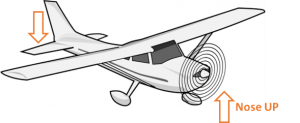 |
|
| Pulling the yoke results in elevator up and hence nose up attitude. | |
Pushing the yoke, pushes the elevator down, the tail is pushed up, nose is pushed down into a nose down attitude.
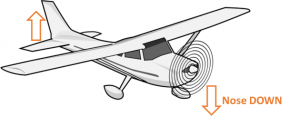 |
|
| Pushing the yoke results in elevator down and hence nose down attitude. | |
The trim might at first appear counter-intuitive. If the trim is up, the setting does not result in a nose up attitude, but a nose down attitude. Here is why…
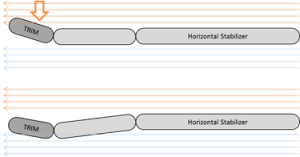 |
 |
| When the trim comes up, it pushes the elevator down, which pushes the tail up and the nose down. | |
And here is the other way around.
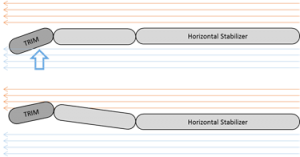 |
 |
| When the trim comes down, it pushes the elevator up, which pushes the tail down and the nose up. | |
So much for the theory. So how does this translate into a meaningful check in your 360° go-around? First I will set the elevator trim to the neutral position when doing my cockpit check. I will then note how the elevator trim should be set. The elevator trim in the below plane is close to neutral, with a slight up tendency. I will check every time and make sure that the elevator winglet is not moving around. I have seen some planes where the neutral position in the cockpit does not correspond with the neutral positon of the winglet. In this case I was taught to set the winglet to neutral position and disregard the cockpit indication. Pull the yoke slightly and just visually check to have the elevator winglet neutral to the elevator.
After a maintenance I am planning to check also that the elevator is moving into the right direction. In most planes that can be down from the cockpit without going back and forth between the cockpit and the elevator. Pull the yoke slightly to see the elevator surface better. Trim full nose-up and notice which direction the elevator trim travels. It should be going down. Then do the opposite and trim full nose-down and you should notice the elevator trim come all the way up, clearly visible from the cockpit. Now put the trim back to neutral. This is very important! You don’t want the trim to be neither full nose-up nor full nose-down.
Here are the elevator trim settings and how this setting actually looks like on the elevator on a Cessna 210.
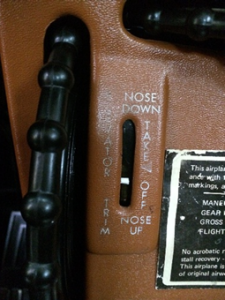 |
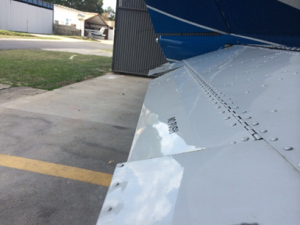 |
  |
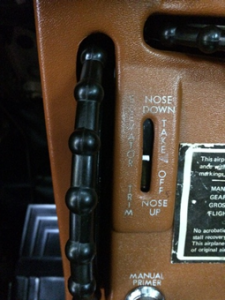 |
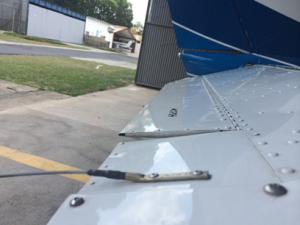 |
  |
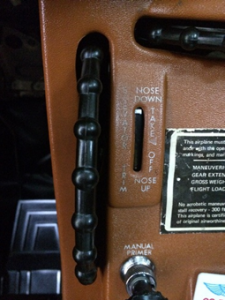 |
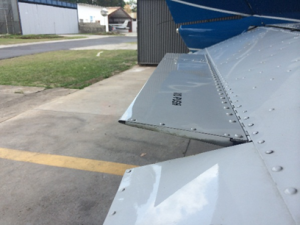 |
  |
I sure hope this is helpful!
Happy pre-flighting!

Pingback: Trim Check | Guatemala Skies